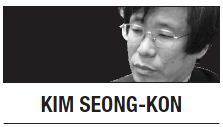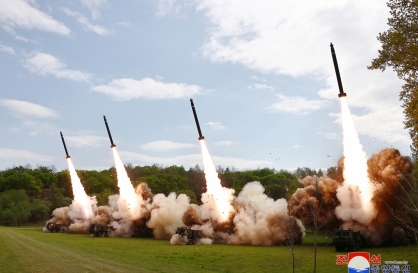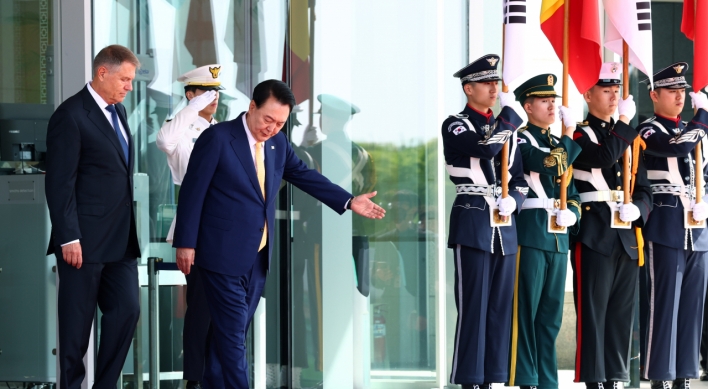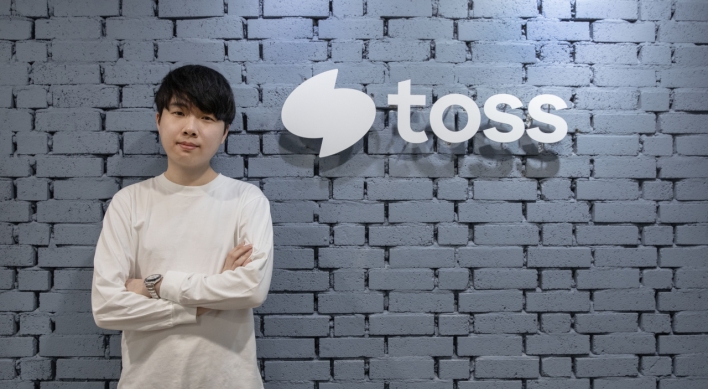[Kim Seong-kon] Future of hallyu: Pop to highbrow
By Korea HeraldPublished : April 10, 2012 - 18:54
As Korean television dramas and K-pop spreads across Asia, Middle Eastern countries and even some parts of Europe, some Koreans have begun asking, “Does Korean entertainment represent true Korean culture?” A few weeks ago, the Ministry of Culture, Sports and Tourism launched an advisory committee to promote Korean culture overseas. Specialists in Korean culture gathered to discuss the prospects and problems of hallyu. They all agreed that dramas, movies and K-pop are not a comprehensive representation of Korean culture, and thus we need to introduce to the world other aspects of Korean culture such as Korean cuisine, architecture, attire, music, painting and literature.

Some members of the committee dismissed Korean dramas and K-pop as commercial lowbrow culture, and resentfully argued that the ever popular dramas and songs should be immediately replaced by the pure arts and highbrow culture of Korea. It never seemed to occur to them that foreigners may not be intrigued by Korean highbrow culture, although all variants of Korean culture are important. Furthermore, they did not seem to realize that the enormous success of Korean dramas and K-pop have essentially prepared a path for the introduction of Korean highbrow culture to the rest of the world.
Instead of disparaging dramas and K-pop, therefore, we should be grateful. In the past, we tried without much success to exhibit our highbrow culture to the world, but we were not successful until hallyu made inroads into other countries first. In that sense, Korean dramas and K-pop have played the role of John the Baptist, preparing the path for Jesus’ arrival.
Other committee members claimed that K-pop is not so much Korean as it is Western in its essence. But Culture Minister Choe Kwang-shik evaluated the issue in a more complex way. He remarked, “When I watched K-pop on TV, I was stunned, because I saw aspects of traditional Korean culture mixed in with the contemporary.” Choe, a renowned folk historian, pointed out, “First of all, group dancing is uniquely Korean. Even though Michael Jackson used the group dancing technique as well, he was always the main star and others simply were his backup dancers. In K-pop, however, all members of the group are stars, and every dancer is equal.”
Then he continued, “Old Chinese documents describe that, interestingly, Korean dance featured singing and dancing at the same time, using both arms and legs while dancing. You can find the vestige still lingering in K-pop vocal groups.”
According to Choe, in northern cultures, in places like Russia, dancers mainly use their legs and feet while dancing, whereas in southern cultures, in places such as Malaysia or Indonesia, dancers chiefly use their arms and hands while dancing. In Korean traditional dancing, both arms and legs are used.
Indeed, K-pop is a mixture of two different cultures, Korean and Western. Perhaps it is this hybrid culture between the East and West that appeals to young people in other countries. They can easily embrace K-pop because its Western aspects are familiar to them already. At the same time, they are fascinated by the exotic, foreign elements that are also found in K-pop. After all, we now live in the age of hybrid cultures, and nothing is wrong with merging two different cultures. According to the “co-evolution theory”’ no culture is subsumed or eliminated by another culture. Instead, cultures blend, integrate, and finally enrich each other.
Yet, we still tend to believe that the more “pure Korean” something is, the better. Perhaps this was true in the 20th century when foreign cultures were so remote, and when it was difficult to visit another country. But such purism is no longer appropriate. The times have changed. Today, people easily travel to foreign countries, and share many things using electronic devices and SNS such as the iPad, smartphones, YouTube, Facebook and Twitter. All boundaries are dismantling, disintegrating and collapsing. And cross-cultural activities are actively pursued every day on the Internet. These days, therefore, many young people may find something entirely foreign, as opposed to a hybrid, unfamiliar and thus less intriguing.
We cannot deny the fact that Korean actors and actresses and K-pop singers have done a splendid job overseas as harbingers of Korean culture. In fact, they have achieved what other serious artists have not been able to do. Thanks to their efforts, young people in other countries have suddenly become interested in Korean culture, language and history.
Many of them also want to visit Korea and appreciate Korean culture. Minister Choe also said that in the Middle East, Korean cars have begun to outsell Japanese cars, once again thanks to Korean dramas and K-pop.
Meanwhile, we must be modest. We should respect other cultures and be careful not to belittle or offend them. We should not utter inconsiderate words such as “hallyu has conquered the world.” Only then can we hope to see the popularity of hallyu and even highbrow Korean culture continue to spread and have appeal across the globe in the future.
By Kim Seong-kon
Kim Seong-kon is a professor of English at Seoul National University and director of the Korea Literature Translation Institute. ― Ed.

Some members of the committee dismissed Korean dramas and K-pop as commercial lowbrow culture, and resentfully argued that the ever popular dramas and songs should be immediately replaced by the pure arts and highbrow culture of Korea. It never seemed to occur to them that foreigners may not be intrigued by Korean highbrow culture, although all variants of Korean culture are important. Furthermore, they did not seem to realize that the enormous success of Korean dramas and K-pop have essentially prepared a path for the introduction of Korean highbrow culture to the rest of the world.
Instead of disparaging dramas and K-pop, therefore, we should be grateful. In the past, we tried without much success to exhibit our highbrow culture to the world, but we were not successful until hallyu made inroads into other countries first. In that sense, Korean dramas and K-pop have played the role of John the Baptist, preparing the path for Jesus’ arrival.
Other committee members claimed that K-pop is not so much Korean as it is Western in its essence. But Culture Minister Choe Kwang-shik evaluated the issue in a more complex way. He remarked, “When I watched K-pop on TV, I was stunned, because I saw aspects of traditional Korean culture mixed in with the contemporary.” Choe, a renowned folk historian, pointed out, “First of all, group dancing is uniquely Korean. Even though Michael Jackson used the group dancing technique as well, he was always the main star and others simply were his backup dancers. In K-pop, however, all members of the group are stars, and every dancer is equal.”
Then he continued, “Old Chinese documents describe that, interestingly, Korean dance featured singing and dancing at the same time, using both arms and legs while dancing. You can find the vestige still lingering in K-pop vocal groups.”
According to Choe, in northern cultures, in places like Russia, dancers mainly use their legs and feet while dancing, whereas in southern cultures, in places such as Malaysia or Indonesia, dancers chiefly use their arms and hands while dancing. In Korean traditional dancing, both arms and legs are used.
Indeed, K-pop is a mixture of two different cultures, Korean and Western. Perhaps it is this hybrid culture between the East and West that appeals to young people in other countries. They can easily embrace K-pop because its Western aspects are familiar to them already. At the same time, they are fascinated by the exotic, foreign elements that are also found in K-pop. After all, we now live in the age of hybrid cultures, and nothing is wrong with merging two different cultures. According to the “co-evolution theory”’ no culture is subsumed or eliminated by another culture. Instead, cultures blend, integrate, and finally enrich each other.
Yet, we still tend to believe that the more “pure Korean” something is, the better. Perhaps this was true in the 20th century when foreign cultures were so remote, and when it was difficult to visit another country. But such purism is no longer appropriate. The times have changed. Today, people easily travel to foreign countries, and share many things using electronic devices and SNS such as the iPad, smartphones, YouTube, Facebook and Twitter. All boundaries are dismantling, disintegrating and collapsing. And cross-cultural activities are actively pursued every day on the Internet. These days, therefore, many young people may find something entirely foreign, as opposed to a hybrid, unfamiliar and thus less intriguing.
We cannot deny the fact that Korean actors and actresses and K-pop singers have done a splendid job overseas as harbingers of Korean culture. In fact, they have achieved what other serious artists have not been able to do. Thanks to their efforts, young people in other countries have suddenly become interested in Korean culture, language and history.
Many of them also want to visit Korea and appreciate Korean culture. Minister Choe also said that in the Middle East, Korean cars have begun to outsell Japanese cars, once again thanks to Korean dramas and K-pop.
Meanwhile, we must be modest. We should respect other cultures and be careful not to belittle or offend them. We should not utter inconsiderate words such as “hallyu has conquered the world.” Only then can we hope to see the popularity of hallyu and even highbrow Korean culture continue to spread and have appeal across the globe in the future.
By Kim Seong-kon
Kim Seong-kon is a professor of English at Seoul National University and director of the Korea Literature Translation Institute. ― Ed.
-
Articles by Korea Herald


![[AtoZ into Korean mind] Humor in Korea: Navigating the line between what's funny and not](http://res.heraldm.com/phpwas/restmb_idxmake.php?idx=644&simg=/content/image/2024/04/22/20240422050642_0.jpg&u=)




![[Herald Interview] Why Toss invited hackers to penetrate its system](http://res.heraldm.com/phpwas/restmb_idxmake.php?idx=644&simg=/content/image/2024/04/22/20240422050569_0.jpg&u=20240422150649)

![[Graphic News] 77% of young Koreans still financially dependent](http://res.heraldm.com/phpwas/restmb_idxmake.php?idx=644&simg=/content/image/2024/04/22/20240422050762_0.gif&u=)





![[Exclusive] Korean military set to ban iPhones over 'security' concerns](http://res.heraldm.com/phpwas/restmb_idxmake.php?idx=652&simg=/content/image/2024/04/23/20240423050599_0.jpg&u=)



